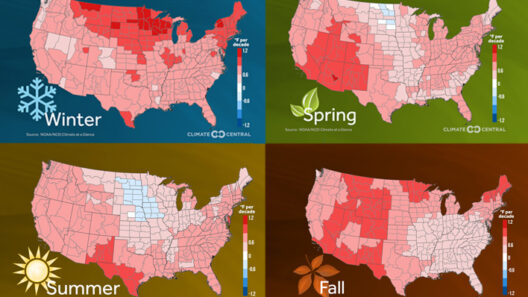The Siberian Husky, a breed renowned for its majestic appearance and spirited disposition, is often associated with frigid tundras and biting winds. However, the pressing question that arises is: can these robust canines truly thrive in hot climates? The answer is nuanced, inviting pet owners to reconsider preconceived notions about this energetic breed. Indeed, many Huskies currently find themselves in warmer environments, yet prosper, provided that their owners make informed adjustments. What follows is a comprehensive exploration of the adaptability of Huskies, coupled with practical strategies for ensuring their comfort and well-being in elevated temperatures.
The first factor to consider is the innate physiology of the Siberian Husky. Bred for cold climates, Huskies possess a double coat comprised of a dense undercoat and longer guard hairs, designed to insulate against harsh subzero conditions. While this characteristic may seem ill-suited for a hotter climate, it is essential to recognize that a Husky’s coat serves multiple purposes. It not only shields them from cold but also provides protection from heat and ultraviolet rays. Moreover, this double coat can help maintain a stable internal temperature, provided that the dog is acclimatized to its environment. This raises a compelling question—can adaptation be achieved through gradual exposure?
Acclimatization is indeed vital for any canine, particularly those transitioning from cooler to warmer habitats. For Huskies, acclimatizing them to heat involves methodical exposure rather than abrupt subjection. Pet owners should begin by allowing their Husky to spend short periods outdoors during the early hours or late evenings when temperatures are relatively mild. Gradually extending these intervals allows the dog’s body to adapt to higher temperatures. Furthermore, it engages their natural instincts to explore and socialize, crucial for psychological well-being.
Hydration emerges as an unequivocal necessity in the conversation about Huskies in hot climates. These dogs thrive on ample access to fresh, cool water. Inadequate hydration can lead to heat exhaustion, a condition that can escalate quickly in above-average temperatures. Therefore, pet owners must ensure that their furry companions have a constant supply of water throughout the day, particularly in the summer months. It is equally essential to provide water during outdoor activities; strategic planning can mitigate the risks of overheating.
While Huskies are famously resilient, they are not impervious to heat stress. The signs of overheating can manifest in various ways, ranging from excessive panting and drooling to lethargy and disorientation. It is imperative for pet owners to remain vigilant, particularly during strenuous activities. Recognizing these symptoms can be lifesaving; immediate action, such as relocating the dog to a cooler space and offering water, is crucial. Moreover, learning to identify individual differences in each dog’s heat tolerance can aid in effectively managing their exposure to high temperatures.
Another detractor from the misconception that Huskies cannot thrive in warmer climates lies in the importance of appropriate exercise schedules. Unlike other breeds that may benefit from vigorous exercise in the early afternoon, Huskies should ideally engage in physical activity during cooler parts of the day. Morning or evening walks not only prevent overheating but also promote a healthier lifestyle and behavioral balance. This paradigm shift in exercise management could significantly enhance the dog’s quality of life.
Consequently, pet owners should also consider their environments. Indoor spaces can be allies in the battle against soaring temperatures. Adequate ventilation, ceiling fans, and air conditioning are indispensable tools for keeping the home environment bearable for a Husky. Additionally, creating shaded outdoor spaces can provide refuge from the sun when it is at its peak. Providing a cozy, shaded area can transform a hot backyard into a suitable haven for your Husky.
Moreover, grooming plays a pivotal role when it comes to maintaining a Husky’s comfort level in warm climates. Contrary to popular belief, double-coated breeds do not require shaving in warmer weather. Instead, regular brushing helps remove loose hair, reducing the insulated effect of the coat and allowing better airflow against the skin. Such grooming practices contribute to thermal regulation, revealing yet another measure owners can adopt to protect their pets.
Feeding practices must also adapt to temperature changes. Offering light meals during hot months can prevent sluggishness caused by heavy digestion. Foods rich in moisture, like fruits and vegetables, can supplement hydration. However, owners must always be cautious about introducing new dietary elements, ensuring the dog’s stomach can tolerate them. Specifically designed canine foods that support hydration can be a beneficial addition to your Husky’s diet.
Interestingly, the social temperament of Huskies can also play a role in their adaptation. They are inherently pack-oriented, often thriving on companionship. Engaging with fellow dogs or humans in playful, non-strenuous settings can create a comfortable environment that alleviates heat stress. However, socializing must be done with care, avoiding overly taxing interactions that could exacerbate heat-related issues.
In conclusion, the ability of Huskies to live in hot climates is not a black-and-white issue. Through diligent acclimatization, vigilant hydration practices, careful exercise schedules, and considerate environmental management, pet owners can facilitate a harmonious existence for their Huskies in warmer conditions. The key lies in understanding these remarkable canines, recognizing their limitations, and adapting to meet their unique needs. Armed with the right knowledge and tools, pet owners can shift their perspective to embrace the idea that Huskies can indeed flourish, even amidst the swirling heat of summer.








